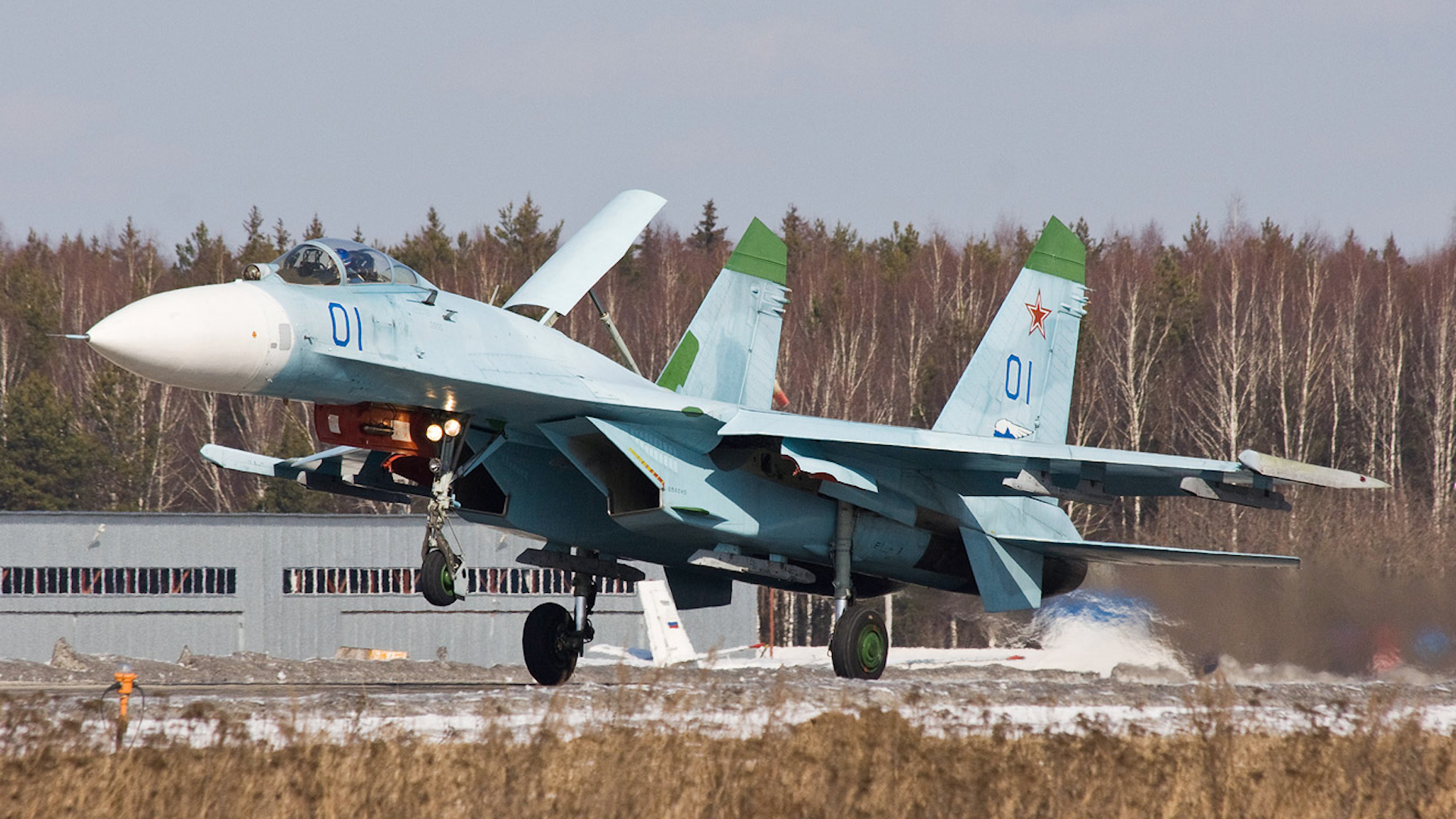North Korea is set to receive MiG-29 Fulcrum and Su-27 Flanker fighter aircraft from Russia in return for Pyongyang sending thousands of troops to fight in Moscow’s war in Ukraine. This is the assessment of the commander of the United States Indo-Pacific Command (USINDOPACOM), after much speculation about the nature of the support that might be headed to North Korea to reward that country for its growing military backing of Russia. The prospect of fighter aircraft being transferred by Russia is something that TWZ has discussed in the past but there are questions to be asked about how simple it will be to provide Pyongyang with serviceable MiG-29s and Su-27s — especially at short notice.
Adm. Samuel Paparo, USINDOPACOM commander, recently told reporters that Moscow and Pyongyang had reached an agreement on the fighter transfer. Speaking at the Reagan National Defense Forum in Simi Valley, California, Paparo notes that the aircraft involved were older, fourth-generation types, but were still “formidable.”
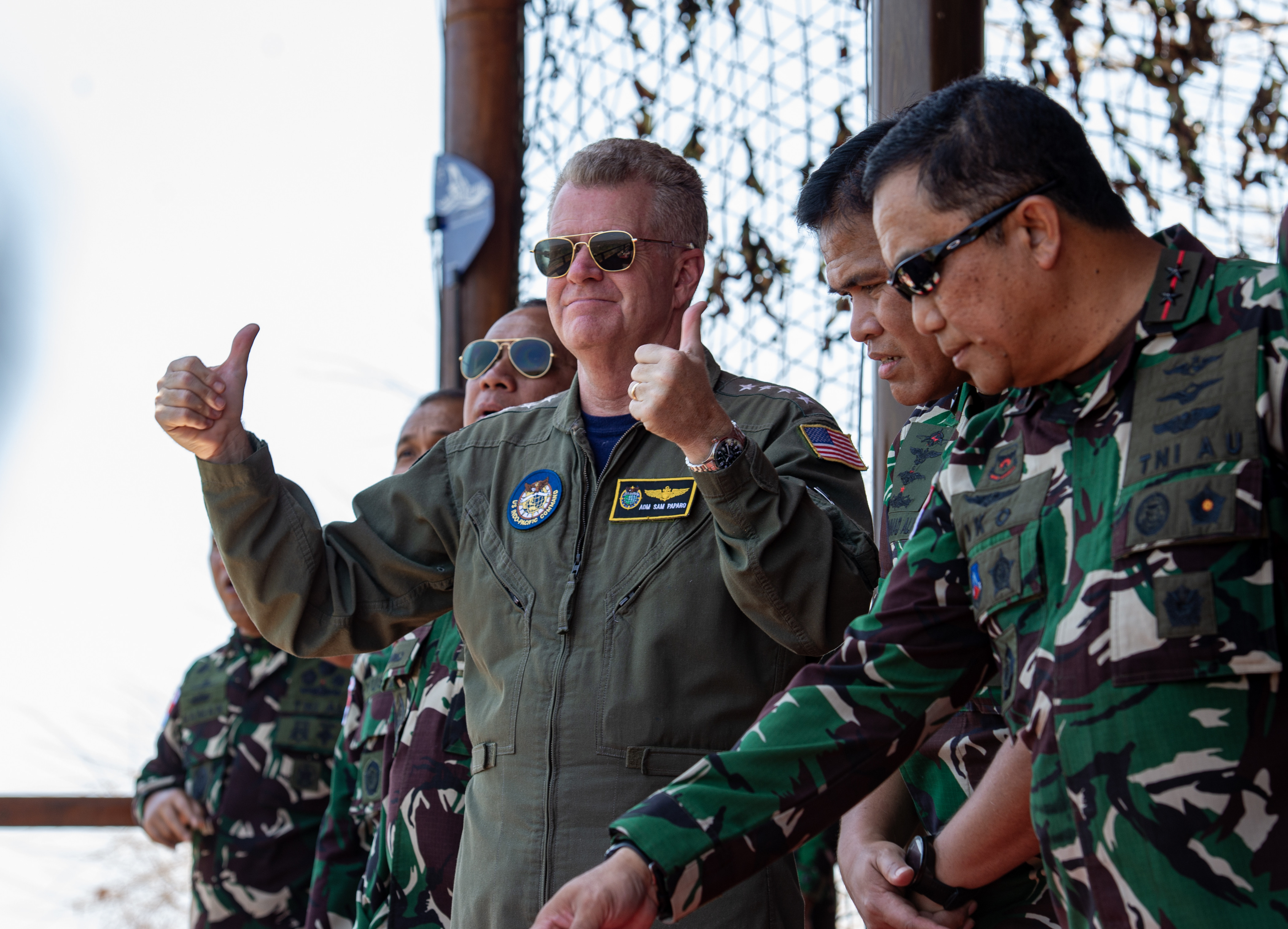
Paparo also provided some other details about the deployment of North Korean soldiers to assist Russia in its full-scale invasion of Ukraine, as well as the counteroffensive directed against Ukrainian troops in the Kursk region.
The admiral said that North Korea had provided the troops without prompting and that, although they have been deployed to combat zones, they haven’t yet seen active combat. This is contrary to other statements, including from Ukrainian President Volodymyr Zelensky, who has said that North Korean soldiers are in engaged in combat on the front line.
Regardless, providing troops — as well as significant quantities of arms, including huge numbers of artillery shells, and all the way up to short-range ballistic missiles — clearly seems to have paid off for Pyongyang.
As we have discussed in the past, a Russian offer to revamp the aging Korean People’s Air Force (KPAF) would almost certainly be snapped up by North Korea.
The most capable aircraft in the KPAF inventory are MiG-29 fighters and Su-25 Frogfoot ground-attack aircraft, followed by older MiG-23 Flogger swing-wing combat jets.

Otherwise, its combat fleet comprises even more antiquated equipment, including Chinese-made H-5 Beagle first-generation jet bombers, Soviet-era MiG-21 Fishbeds and their Chinese F-7 equivalents, and Chinese-made F-6 Farmers — a first-generation supersonic fighter. Even F-5 Fresco jets — a license-built version of the MiG-17, which was first flown in 1950 — remain in KPAF service, although these are reportedly only now considered for suicide missions.
Back in September 2023, North Korean leader Kim Jong Un visited the Komsomolsk-on-Amur Aircraft Production Association (KnAAPO), based in Komsomolsk-on-Amur in the Russian Far East. This plant builds advanced fighters including the Su-57 Felon next-generation fighter and the Su-35 Flanker multirole fighter, the two highest-end single-seat fighters in Russian service today.
Kim’s visit to KnAAPO led to speculation that advanced fighters might be headed to North Korea, which at that point was preparing to provide Russia with artillery shells and other materiel.

At the time of the visit, Mikhail Degtyarev, regional governor of Khabarovsk Krai, where the KnAAPO facility is located, took to Telegram to provide details and the following statement:
“Our fathers and grandfathers fought together against Japanese militarism, our country supported North Korea in its fight against the United States’ imperialist ambitions in the 1950s, and today we jointly stand up to the pressure of the collective West.”
Meanwhile, in our reporting of the visit, TWZ wrote:
“Clearly, the Su-35 and Su-57 jets produced by KnAAPO would represent a huge upgrade over the severely outdated equipment that North Korea’s air arm currently flies … [But] even if top-of-the-line Su-35s and Su-57s are not on the table, other less capable aircraft would still be a massive upgrade for Pyongyang compared to its existing fleet of older Russian-made jets … Almost anything available from Russia would be sought after, whether MiG-29SMTs, Su-27s, or Su-30s. Even a supply of spare parts and overhauls of its current types would be of great value to Pyongyang.”
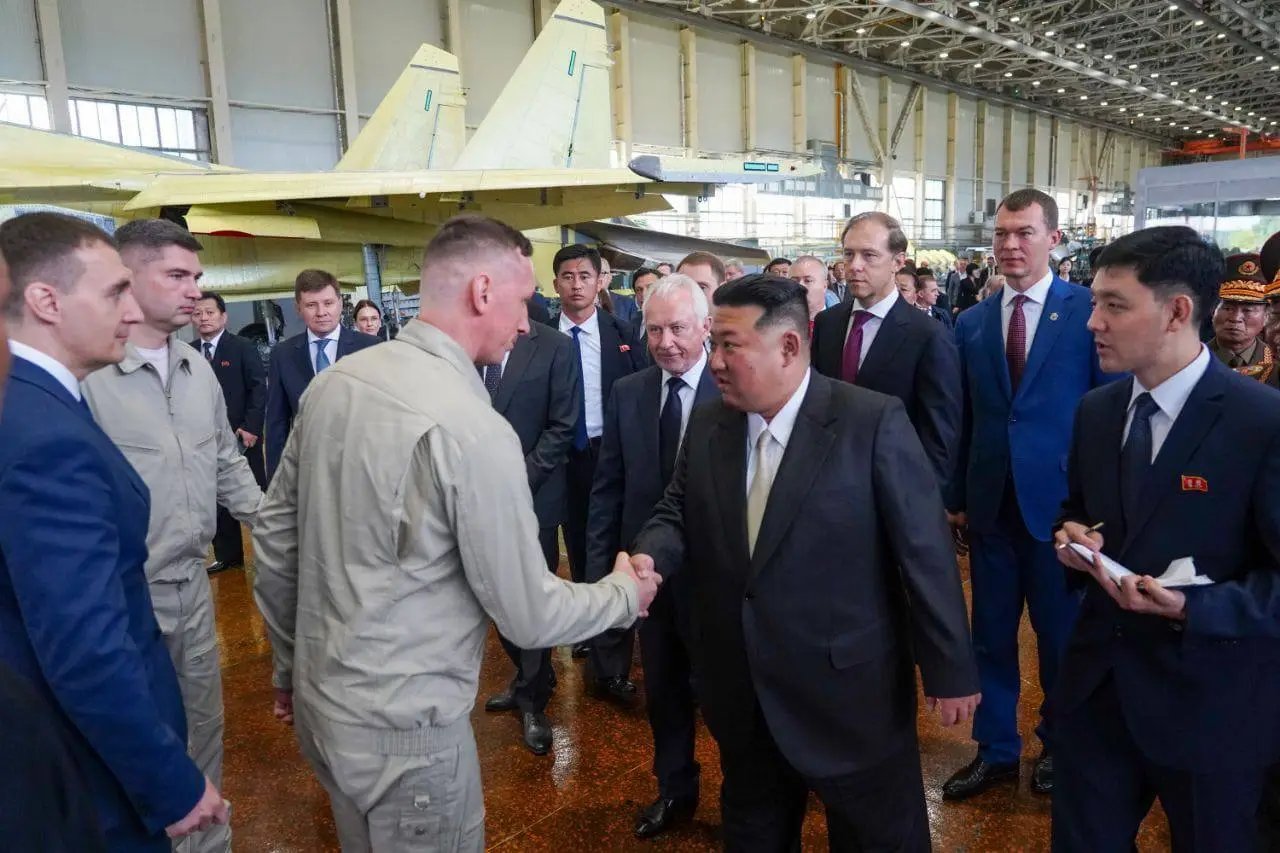
Based on Paparo’s statements, it seems that only the MiG-29 and Su-27 are currently being lined up for transfer to North Korea, a decision that raises some important questions.
After all, the presence in Russian military service of both the MiG-29 and Su-27 is now dwindling and these types are by now long out of production.
Aside from a handful used for test duties and with display teams, Russian Aerospace Forces (VKS) first-generation MiG-29s are now found only within one training regiment and a frontline regiment based in Armenia.
One less likely, but possible source of MiG-29s could be the aircraft that were refurbished for use by Wagner in support of the Khalifa Haftar’s forces in the Libyan civil war. These unmarked jets appeared at Russia’s Khmeimim Air Base in Syria, where we got a better look at them, before being deployed to Libya. The current status of these jets is very much unclear.
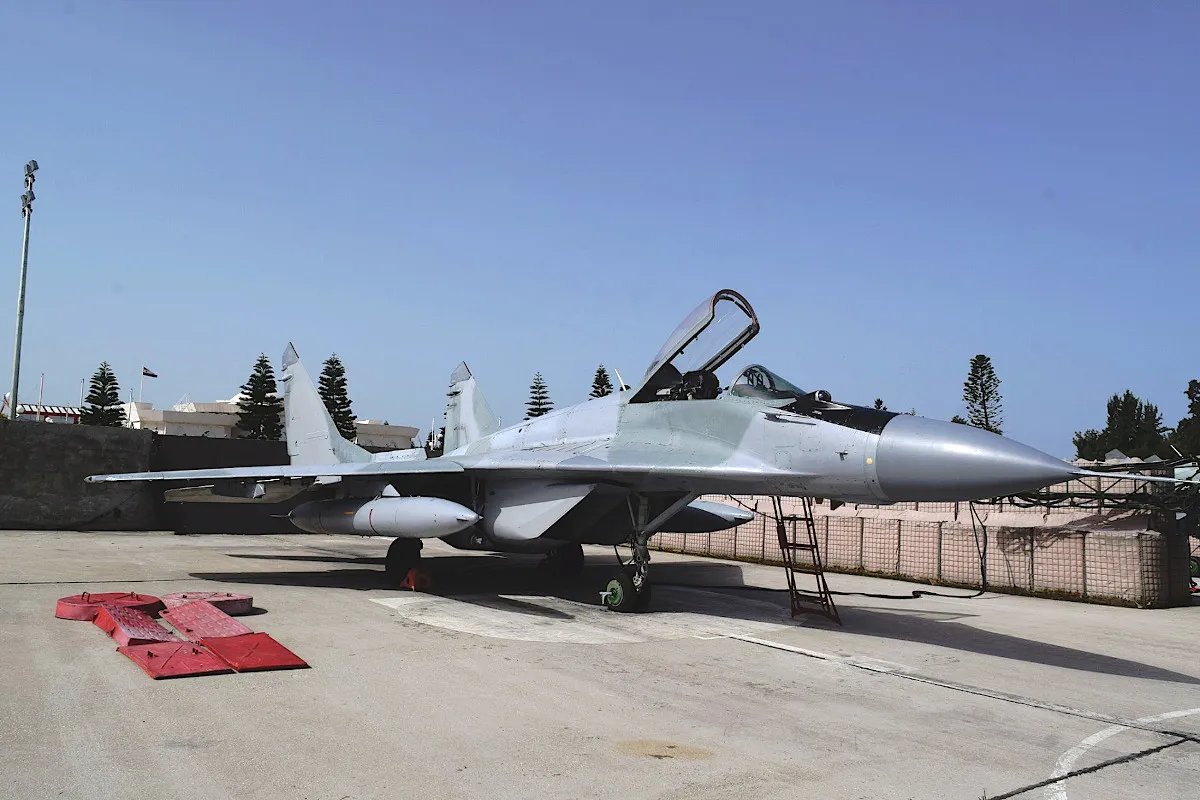
The status of the more modern MiG-29SMT — a type that Russia inherited from a botched Algerian order — is a bit more complex. While these aircraft — which are multirole-capable — went into service at Kursk-Khalino, they have since been stored for a longer period. They would require some degree of overhaul to make them active again, were they to be transferred to North Korea.
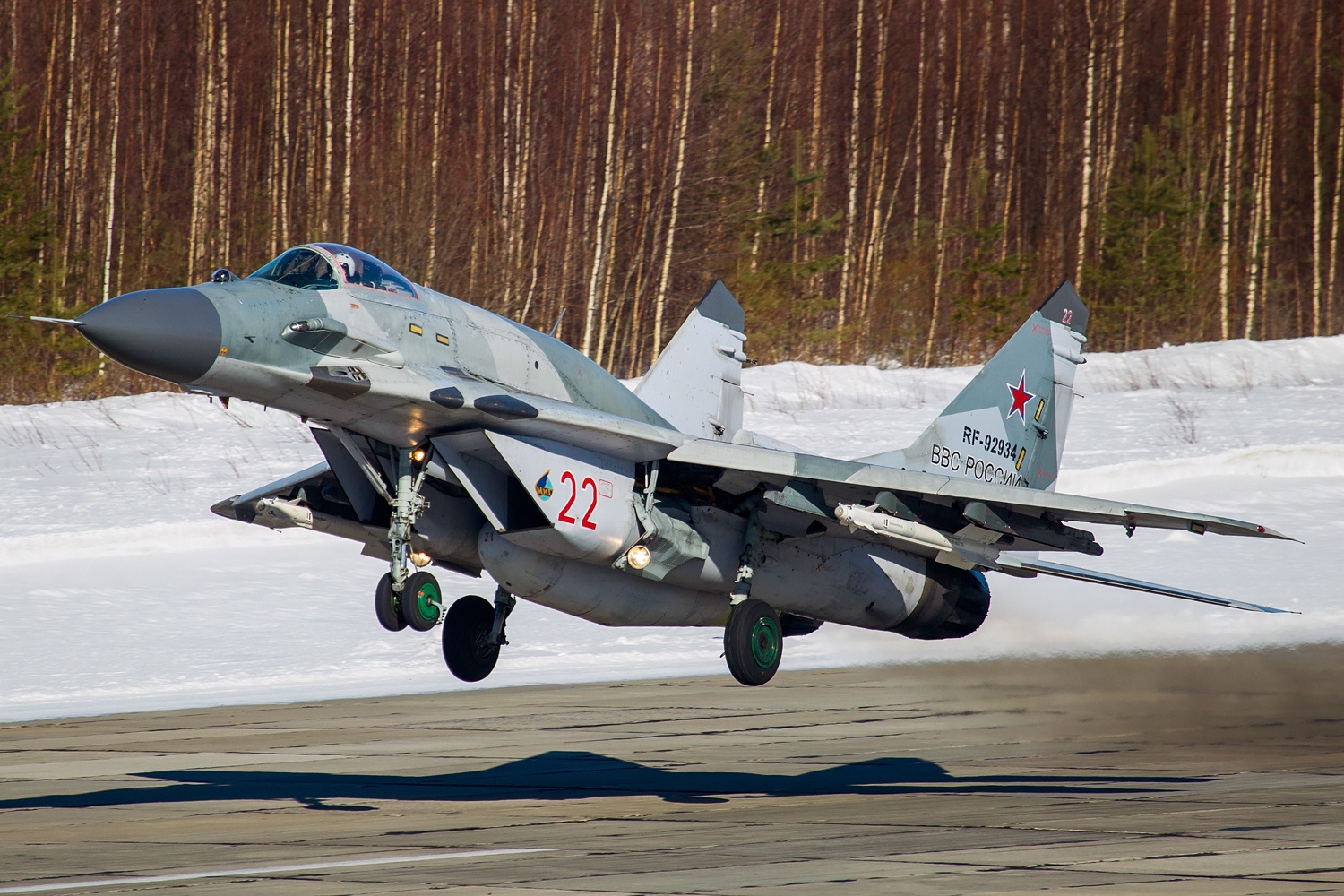
Russia’s most advanced MiG-29s, the naval MiG-29KRs that are assigned to the country’s only aircraft carrier’s air wing, are an option but also a questionable one. Handing those jets over to North Korea would mean the Admiral Kuznetsov carrier would only have aged Su-33s for its fixed wing contingent. Although the ship has not been to sea for many years and its refurbishment has been plagued with disasters and delays, it doesn’t seem like Russia has given up on it, at least yet.
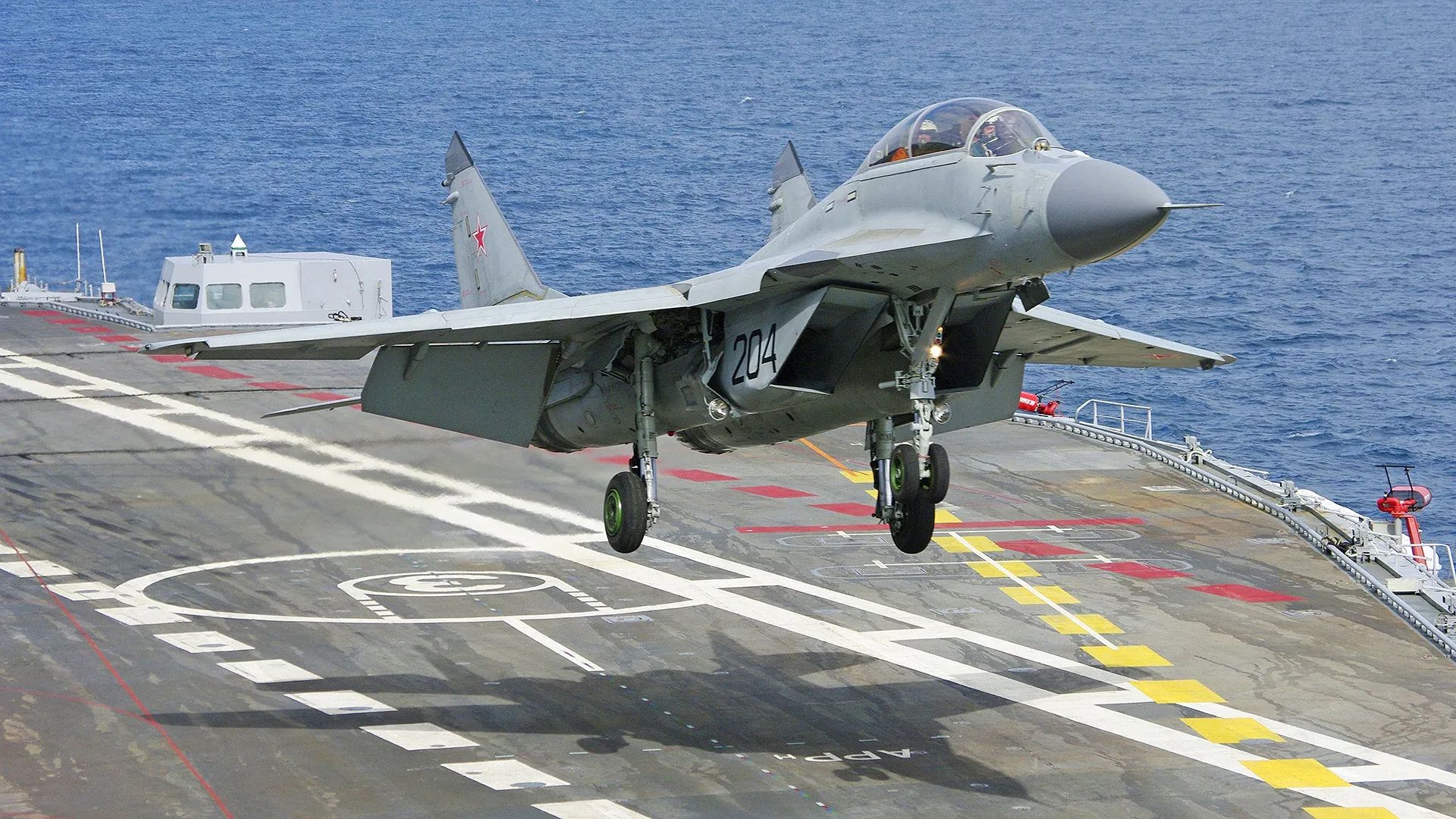
If Russia figures keeping a token carrier air wing intact is less important than keeping North Korea happy at such a critical time, the MiG-29KRs could be supplied. This would give North Korea the most capable examples of the type. Still, these jets have had their fair share of issues for Russia and the only other operator, the Indian Navy, has had a rocky experience operating the type.
As for the Su-27, these are also still in small numbers to test, and frontline operators are now limited to four bases: Krymsk, Petrozavodsk-Besovets, Belbek in Russian-occupied Crimea, and Tsentralnaya Uglovaya. The associated units are now mainly in the process of being re-equipped with more modern Su-30 series or Su-35 Flankers.
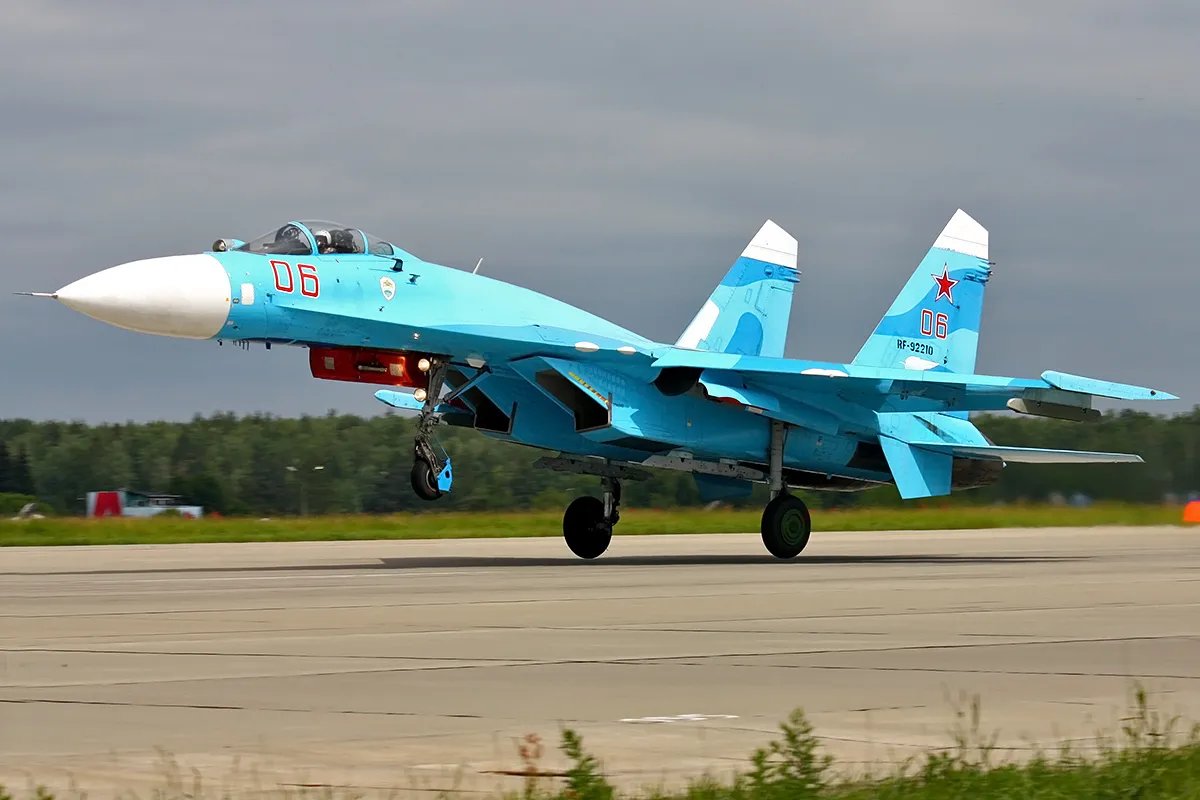
Overall, this doesn’t leave a huge inventory of readily available MiG-29 and Su-27 fighters for potential transfer to Pyongyang. Making these aircraft available to North Korea at short notice would leave gaps in the VKS fighter force — and potentially also eat into vital training capacity. Also, these hard-worked fighters are now very old, although that’s likely less of an issue for North Korea, used to working with vintage equipment.
MiG-29s would make more sense for North Korea since the KPAF already operates them. On the other hand, there are fewer MiG-29s available in VKS use compared with the bigger and more capable Su-27, on which North Korean pilots and maintainers would require a longer period of conversion training.
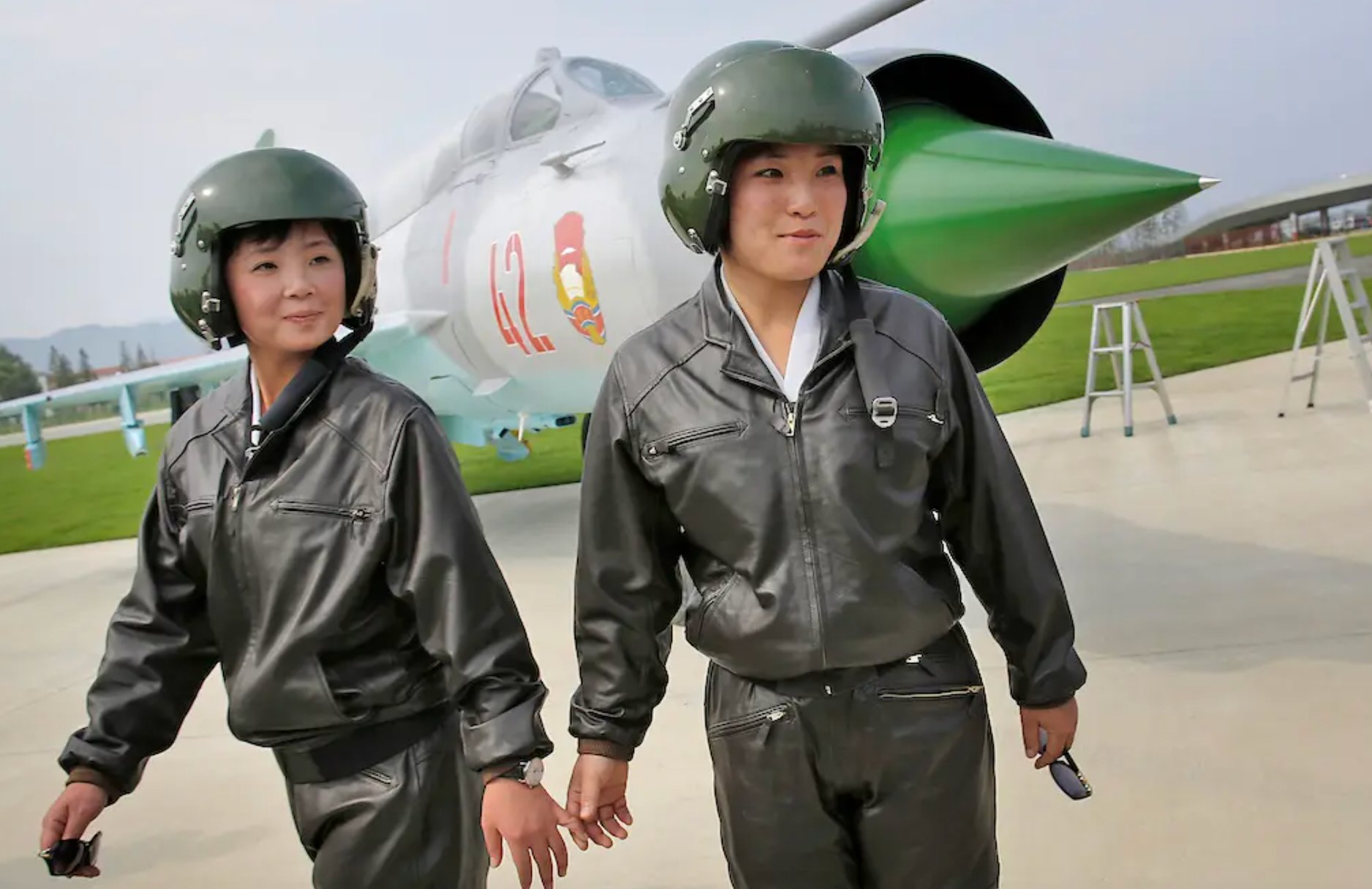
The other option would be to refurbish MiG-29 and Su-27 aircraft from the considerable numbers of these jets that are in long-term storage around Russia. This would be a lengthy and expensive process, however, especially with Russian aerospace overhaul concerns already heavily engaged in supporting their domestic customers to ensure serviceability among combat fleets for the war in Ukraine.
It’s worth noting that, outside of the MiG-29 and Su-27, Russia would appear to have a readymade fleet of fighters for transfer to North Korea. A batch of more advanced Su-35s has already been built for Egypt, but that deal collapsed, apparently under U.S. pressure. A proposal to transfer to Iran some of the Su-35s has so far not materialized, which could leave them available for North Korea. On the other hand, Paparo’s statements, referring only to the MiG-29 and Su-27, would seem to rule that out and we still don’t know for sure if the Iranian deal will fall through.
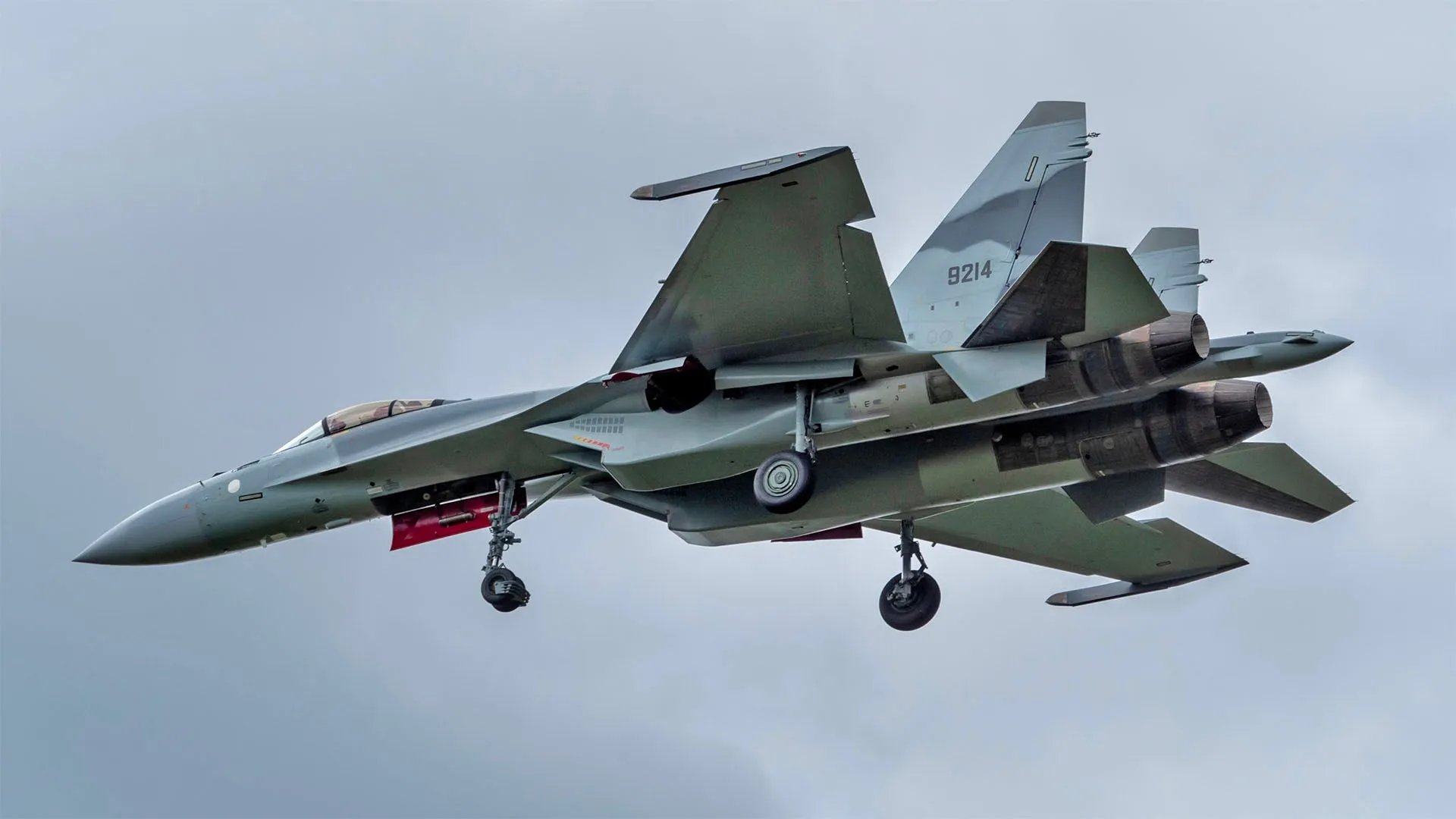
Whatever the source of the MiG-29 and Su-27 aircraft apparently now headed to North Korea, they will be a welcome addition to the KPAF. But, as we have discussed before, they may well not be the only Russian defense products headed in the same direction.
As well as fighters, North Korea would also almost certainly be interested in other Russian technologies, too, whether related to the modernization of other parts of its armed forces or to assist in furthering its own missile and space programs.
There have already been indications that North Korea is due to receive air defense systems from Russia — potentially S-400 long-range surface-to-air missiles — and Pyongyang would very likely also covet specific other capabilities, including ballistic missile technologies, especially reentry vehicles, as well as new submarine technologies. On a broader military level, North Korea and Russia have ratified a mutual defense treaty, which calls for each side to come to the other’s aid in case of an armed attack. In addition, the growing relationship between Russia and North Korea has seen increased economic cooperation and energy shipments.
Another intriguing dynamic in this affair involves the relationship between Russia and South Korea.
While MiG-29s and Su-27s hardly change the power balance on the Korean peninsula, Seoul will likely be alarmed at the prospect of North Korea receiving any kind of defense aid from Russia.
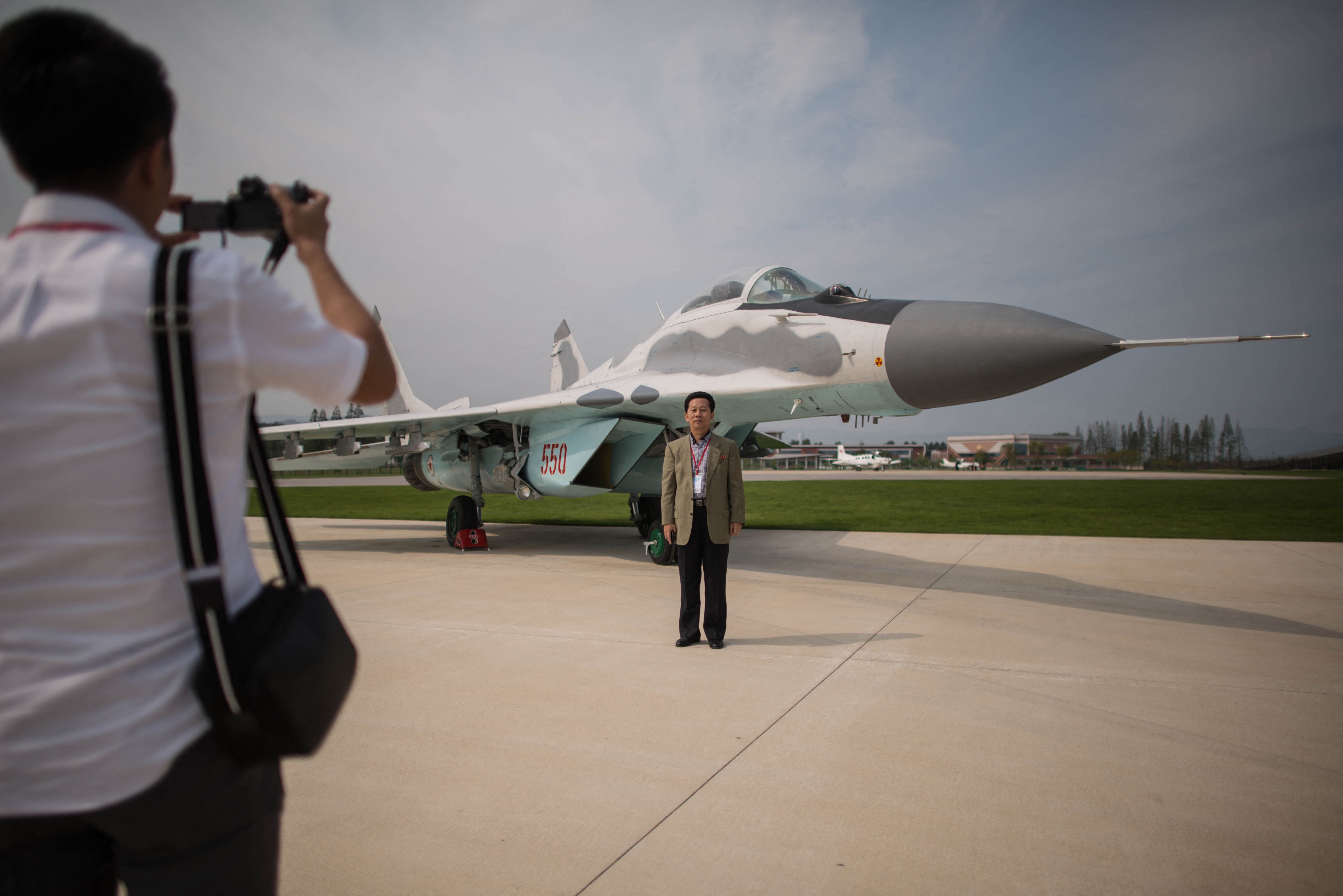
In the past, the South Korean Foreign Ministry has warned Russia of “very negative impacts” on its relations with Seoul if it continues to expand its military cooperation with North Korea.
This is especially ironic considering that Russia and South Korea previously had a military relationship of their own, primarily based around Moscow delivering various kinds of arms — including armored vehicles and anti-tank missiles — to Seoul as a way of paying back debts incurred during the Soviet era.
For now, there are very many questions still to be answered surrounding the anticipated delivery of MiG-29s and Su-27s to North Korea. Importantly, however, these are older and significantly less capable than the more recent Su-35 and Su-57 that at one time seemed to be potentially on the table for Pyongyang. Moreover, their fairly limited presence in the Russian Armed Forces at this point means that it’s not entirely straightforward to deliver MiG-29s and Su-27s at short notice.
Perhaps more importantly, however, is the symbolic value of such a transfer, further cementing the growing military partnership between Russia and North Korea, which is playing out in Ukraine and, which, before long, looks like it will also bring about a modest — but badly needed — modernization of the Korean People’s Air Force.
Contact the author: thomas@thewarzone.com
